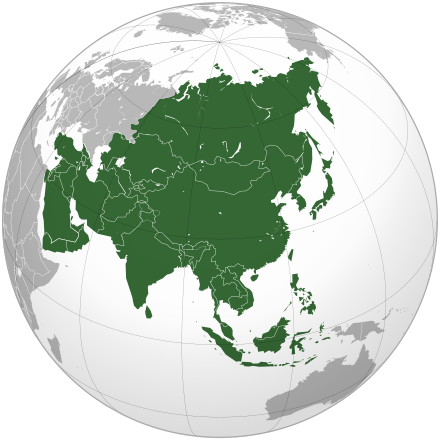Height varies significantly across different regions of the world, and Asia is no exception. The average height in Asia is influenced by genetics, nutrition, lifestyle, and economic factors. While some countries have seen significant increases in height due to improved living conditions, others still have relatively shorter populations compared to Western countries.In this article, we will explore the average male height in Asia, the average female height in Asia, and how height trends have changed over time. We will also compare the average height in Asian populations with other continents and examine key factors that influence growth.
Table of Contents
ToggleAverage Height of Asian People
Average Height for Men in Asia
The average male height in Asia varies significantly across different countries. Generally, men in East Asia tend to be taller than those in South and Southeast Asia. Here are some of the average male heights recorded in various Asian countries:
- South Korea: 174 cm (5’8”)
- Japan: 172 cm (5’7.5”)
- China: 171 cm (5’7”)
- India: 166 cm (5’5.5”)
- Vietnam: 168 cm (5’6”)
- Indonesia: 165 cm (5’5”)
East Asian countries, particularly South Korea and Japan, have witnessed significant height increases in recent decades due to better nutrition and healthcare.
Average Height for Women in Asia
The average female height in Asia is generally lower than the global average. Like men, women in East Asia tend to be taller than those in South and Southeast Asia. Here are some statistics on female height in different countries:
- South Korea: 162 cm (5’4”)
- Japan: 159 cm (5’3”)
- China: 160 cm (5’3”)
- India: 153 cm (5’0”)
- Vietnam: 155 cm (5’1”)
- Indonesia: 152 cm (4’11.5”)
The difference between the average female height in Asia and other regions can be attributed to genetics, diet, and healthcare access.
Average Height Statistics in Asia
Regional Variations in Height Across Asia
The average height in Asia is not uniform, as each region has distinct genetic and environmental influences. The tallest populations are typically found in East Asia, while South and Southeast Asia have shorter average heights.
- East Asia: South Korea, Japan, and China have some of the tallest populations in Asia.
- South Asia: Countries like India, Bangladesh, and Pakistan generally have shorter average heights.
- Southeast Asia: Nations like Indonesia, the Philippines, and Thailand have relatively lower average heights compared to East Asia.
Economic development, healthcare access, and improved diets play a crucial role in height differences across these regions.
How Tall Are People in Asia?
On average, the height of people in Asia has been steadily increasing over the years. The average height in Asian populations has improved due to better living standards, but there is still a noticeable gap compared to Western countries.When compared globally, Asian populations are generally shorter than those in Europe and North America, though the gap is narrowing due to improvements in lifestyle and nutrition.
Height Trends in Asia Over Time
Changes in Average Height Over the Decades
Over the past century, the average height in Asia has increased due to better nutrition, healthcare, and economic development. Some key height trends include:
- South Korea: One of the fastest-growing populations in terms of height, with an average increase of 8–10 cm in the last 50 years.
- China: Significant improvements in nutrition have led to noticeable height gains, particularly among younger generations.
- India: While the increase in height has been slower, urban populations are seeing more growth due to better diets and healthcare access.
Countries with rapid industrialization and economic growth have experienced the most significant height increases.
Differences Between Rural and Urban Populations
Rural populations in Asia tend to be shorter than urban populations due to differences in diet, access to healthcare, and overall living conditions. Key reasons include:
- Nutrition: Urban areas typically have better food variety and access to essential nutrients.
- Healthcare: Improved medical care in cities helps prevent childhood diseases that can stunt growth.
- Living Standards: Higher incomes and better living environments contribute to better overall health and development.
As more people move to cities, the average height in Asian populations is expected to continue rising.
Factors Influencing Average Heights in Asia
Genetics and Ethnicity
Genetics plays a crucial role in determining the average height in Asia. Some ethnic groups naturally have shorter statures, while others are predisposed to being taller. Key genetic factors include:
- East Asians tend to have a moderate height range due to their genetic makeup.
- South Asians generally have shorter statures due to evolutionary adaptations to warmer climates.
- Southeast Asians also tend to be shorter, but height is improving with better nutrition.
While genetics set the foundation for height, external factors like diet and healthcare can influence growth.
Nutrition and Diet’s Impact on Growth
Nutrition is one of the most critical factors affecting the average height in Asia. Diets rich in protein, calcium, and essential vitamins contribute to better growth. Key dietary influences include:
- High-protein diets (common in East Asia) support stronger bone development.
- Calcium-rich foods like dairy products help in bone growth.
- Vitamin D intake is essential for proper bone formation.
Countries with improved diets have seen noticeable increases in their average male height in Asia and average female height in Asia over time.
Height Comparison: Asia vs. Other Continents
Height Differences Between Asia, Europe, and the Americas
Compared to other continents, the average height in Asian populations is generally lower. Here’s how Asia compares:
- Europe: The tallest populations, with average male heights around 178 cm (5’10”).
- North America: Similar to Europe, with men averaging around 176 cm (5’9.5”).
- South America: Slightly shorter than North America, with men averaging 172 cm (5’7.5”).
Despite these differences, the gap between Asia and other continents is closing due to better healthcare and nutrition. The average height in Asia is expected to continue rising, particularly in urban areas where living conditions are improving.


